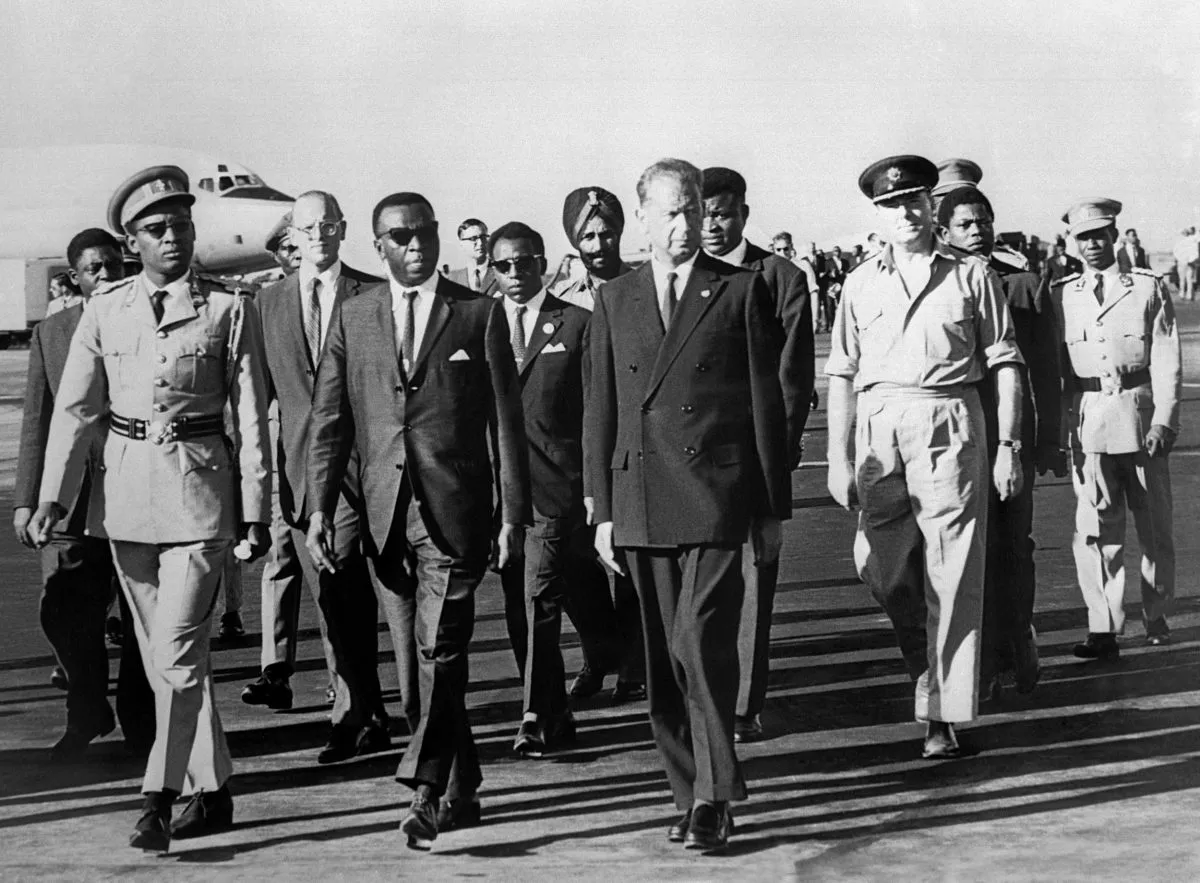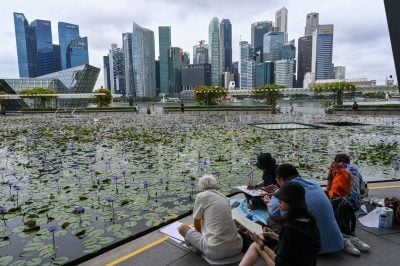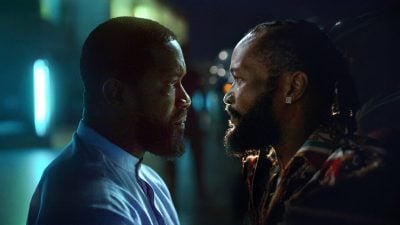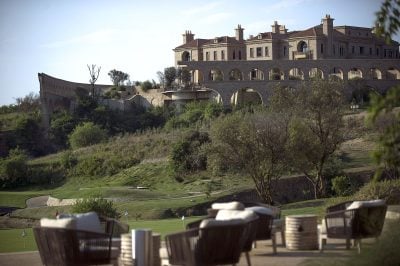In the mid 20th century the “winds of change” began to blow across the African continent. It was a time when Africans became increasingly determined to throw off the shackles of imperialism and take their rightful place as equal world citizens. However, this struggle was not without major difficulties – difficulties faced by Dag Hammarskjöld, the Swedish Secretary General of the United Nations from 1953 to his sudden death in 1961, who devoted his life’s work to forging a new world order from the ashes of colonialism.
While colonialism was a global phenomenon, nowhere was it more entrenched than in Africa. From the Cape to Cairo, in the late 19th century the continent had been carved up by the Europeans and the idea of Africa as a playground for outsiders was established. Africa’s mineral wealth was allocated as a resource for the outside world.
Yet as decolonisation gathered pace in the mid-twentieth century, there were Europeans who realised the terrible injustice of colonialism. Dag Hammarskjöld saw the racial prejudice that lay at the heart of colonialism as sinful. He considered his role that of a priest of a “secular church”.
Author Henning Melber quotes an address given by Hammarskjöld at the 1954 assembly of the World Council of Churches in Evanston, Illinois, titled “an instrument of faith”. He explained that for him the UN was an instrument of faith as its aims were synonymous with God’s will.
That sense of mission would define his engagement with the world, and particularly Africa, in a turbulent era of decolonisation defined by unrepentant apartheid in South Africa, the anarchy of the Congo following Belgium’s withdrawal and the burning embers of white minority rule in other parts of Southern Africa.
Suez saviour
Nowhere were his guiding principles more evident that in the Suez Crisis, the illegal 1956 British-Franco-Israeli invasion of Egypt that became a defining moment for the United Nations and one that helped hasten the fall of the colonial empires.
Hammarskjöld played a decisive role “by his diplomatic skills and finesse” to formulate the first peace mission under the direct control of the Secretary-General. His robust diplomacy made it clear to the invaders that they had run out of road and forfeited the trust of the international community – leading to an ignominious climbdown that delivered a shattering blow to imperial prestige.
The crisis saw the deployment of the United Nations Emergency Force (UNEF), now known colloquially as the “Blue Helmets”. The deployment established five basic principles for peacekeeping mission: such a mission should be an emergency measure and limited in time; it would be carried out completely impartially and would not in any way be permitted to change or prejudice longer-term political or military power relationships and force would be used only in self-defence; permanent members of the Security Council were then excluded from the force; the mission would be under the command of a single UN officer; and the deployment would require the consent of the parties involved, in particular the host country.
Although the history of the Blue Helmets has not been without controversies and scandal, the influence of the UN as a peacekeeping force around the world lives on.
Congo crisis
After his success at Suez, it was the Congo which proved the next major test of Hammerskjöld’s mettle. When Belgium ceded independence to the Congo in 1960 the new government, under president Joseph Kasavubu and prime minister Patrice Lumumba, requested that the United Nations Secretary General dispatch military assistance “to protect the national territory against the present external aggression”.
Adding to the general instability were three factors. The first was a mutiny by the Congolese army. The second was a breakdown in the relationship between the president and the prime minister. The third was the decision by Moise Tshombe, the provincial governor of Katanga, to declare independence from the Congo – probably encouraged by Belgium, which still held an interest in the province’s major mining company, the Union Minière du Haut-Katanga.
By the time that Hammarskjöld presented his first report to the UN Security Council on 18 July, 3,500 UN peacekeepers were in Leopoldville (today Kinshasa).
Lumumba’s fatal journey
Prime Minister Lumumba enjoyed the protection of Blue Helmet troops at his residence. However, he made the fateful decision to leave the house to try to garner greater political support. That failed bid led to his capture by Mobutu Sese Soko and his Force Publique troops, his transfer to Katanga, and ultimately his execution.
Some commentators have contended that the UN’s passivity in allowing the capture of Lumumba made the organisation culpable in his death. That is not an opinion shared by Melber, who instead argues that the UN’s behaviour was exactly in keeping with its mandate that stipulated that it should not be involved in domestic disputes.
Following Lumumba’s assassination, Hammarskjöld worked tirelessly to achieve a peaceful resolution to the Congo crisis. It was during these efforts that he took the fateful decision to fly to meet Moise Tshombe, the Katanga leader, on 18 September 1961.
His aircraft crashed near the Zambian mining town of Ndola, bringing an end to one of the most glittering careers in international diplomacy. He was just 56 years old.
Who killed Hammarskjöld?
In her seminal book Who Killed Hammarskjöld? the historian Susan Williams argues that in a sense, Hammarskjöld’s unswerving high principles and his determined search for peaceful solutions contributed to his death. A different Secretary General, faced with the Katangan crisis in September 1961, might have chosen an easier option than flying, exhausted, to a small town in central Africa to negotiate with an enemy of the United Nations.
But Williams’s book was much more than a celebration of a unique diplomat – it opened a new raft of questions about the nature of his untimely death.
Williams’s discussion of the claim that the plane with Hammarskjöld on board was shot down by a second plane, and that a range of people – including white Rhodesians and the Belgian and British mining companies in Katanga – had a motive for preventing Hammarskjöld and Tshombe from reaching a negotiated settlement, brought intense pressure for a new inquiry.
That led to the establishment of a panel of distinguished jurists known as the Hammarskjöld Commission: which reported in 2013 that there was “persuasive evidence” that Hammerskjöld’s aircraft “was subjected to some form of attack or threat as it circled to land at Ndola”.
The commission recommended that the UN re-open an earlier investigation. Mohamed Chande Othman, the former Chief Justice of Tanzania, was ultimately appointed to lead an inquiry, which is still under way.
While the definitive judgment on how Hammerskjöld died is yet to be written, Melber’s book, in a sense, places the Secretary General’s achievements into context. It reminds us of this unique man and his mission: why he became the only posthumous recipient of the Nobel Peace Prize, and why US President John F. Kennedy was moved to call him “the greatest statesman of our century”.
Want to continue reading? Subscribe today.
You've read all your free articles for this month! Subscribe now to enjoy full access to our content.
Digital Monthly
£8.00 / month
Receive full unlimited access to our articles, opinions, podcasts and more.
Digital Yearly
£70.00 / year
Our best value offer - save £26 and gain access to all of our digital content for an entire year!

 Sign in with Google
Sign in with Google 



